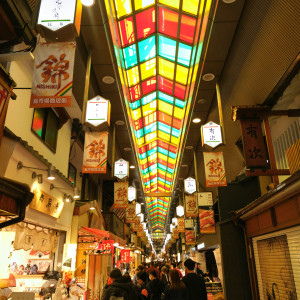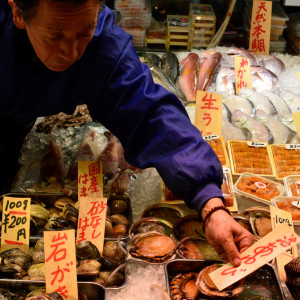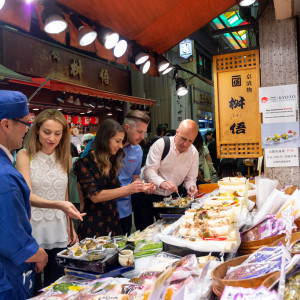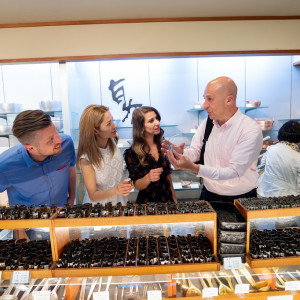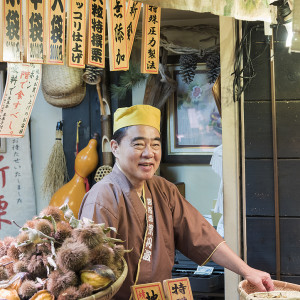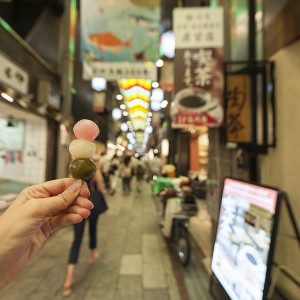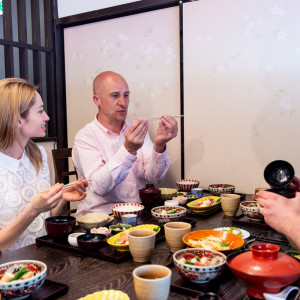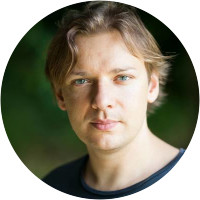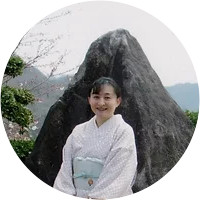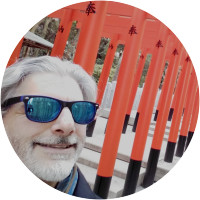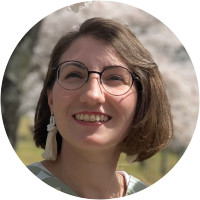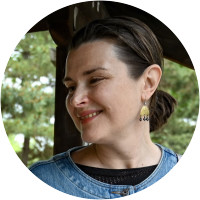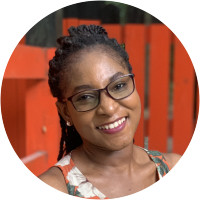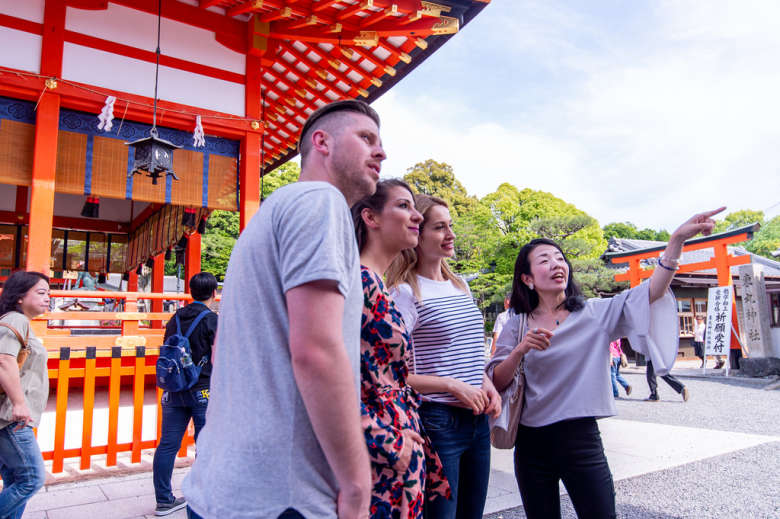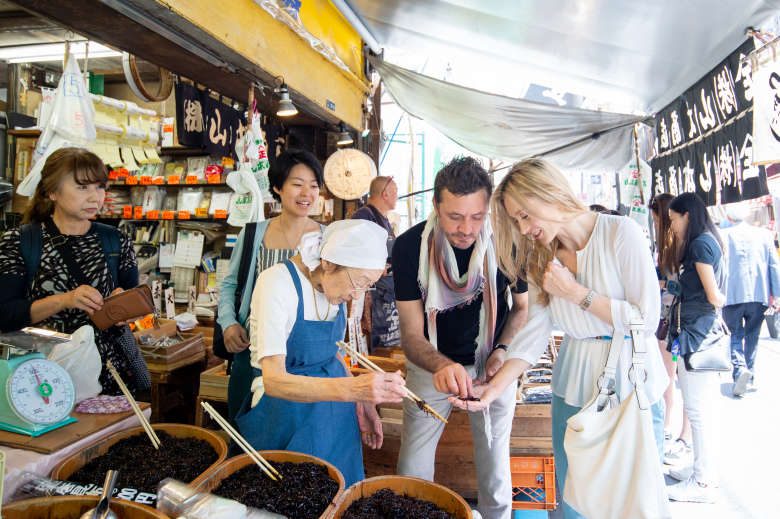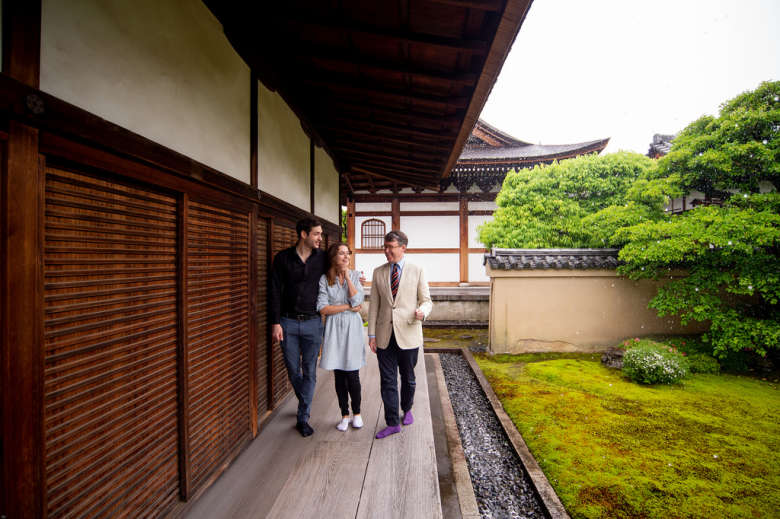Tour Details
Duration
3 hours
Product Type
Tour
Venues
Nishiki Market
Select a date
Tour Description
Kyoto would not be complete without exploring the heart of Kyoto's gourmet world: Nishiki Market. In this 3-hour Kyoto Food Tour you'll explore the market and learn about traditional Japanese food, or washoku, which has recently been placed on UNESCO's Intangible Cultural Heritage list. Challenge your taste buds while taking in the sights, sounds, and smells of this alleyway market. Together with your guide, you'll taste items beyond typical Japanese fare to better understand this varied, nuanced cuisine.
Kyoto's cuisine can be divided into four types: obanzai home cooking, kaiseki cuisine, which developed out of the tea ceremony, vegetarian shojin-ryori cuisine from Zen temples, and the lesser known yusoku-ryori cuisine of the imperial court. Prepare to encounter a wide range of traditional Kyoto foods and the people who make them along your route.
Begin at the birthplace of Nishiki Market: a Shinto shrine whose pure water allowed cooling in an age before refrigeration. You may taste pickled vegetables (tsukemono), Japanese tea sweets (wagashi), local freshwater fish, miso and other condiments, Buddhist temple foods such as tofu and tofu skin (yuba), and traditional Kyoto vegetables (Kyo yasai). Nishiki Market is home to more than just food purveyors, so you'll also visit some of the best cookware shops in Japan.
While meandering through the market, you'll explore two concepts that make Kyoto cuisine so unique: shun and umami. Shun—ingredients that have reached their seasonal peak— guides not only the ingredients in Kyoto's cuisines but also the presentation and tableware. Umami, or savoriness, is one of the five tastes detectable by the human tongue, but it takes on particular importance in Japanese cuisine.
As you eat your way through the depths of Nishiki Market, you'll expand your appreciation of Kyoto's food history and gain a deeper understanding of Kyoto's culinary offerings.
Experts
- You’re a food lover ready to explore Kyoto’s rich culinary heritage and try unique, local flavors.
- You’re a history enthusiast intrigued by the cultural traditions behind Japanese cuisine.
- You’re traveling with family and want to introduce everyone to the sights, smells, and tastes of Kyoto’s famous market.
On this tour, travelers have tasted items including:
- Fresh sashimi
- Fermented miso
- Tofu skin
- Local, pickled vegetables
- Tea sweets
- These tastings do not replace a full meal.
- We visit family-run establishments, and hours and availability may vary.
- Dietary restrictions should be shared in advance to adapt the tour. We do not recommend this tour for gluten or shellfish allergies due to cross-contamination risks.
Will the tastings be able to accommodate food allergies or dietary restrictions?
We do our best to accommodate everyone. If you have severe allergies to seafood or nuts, there will be items you can eat during the tasting, but cross-contamination may be a problem during lunch. The best thing to do is to let us know when you book if anyone in your party has allergies or dietary restrictions. We can check in on dishes, order ahead, and do everything possible to ensure you enjoy your meal.
Can we make purchases along the way?
This is not a shopping trip, however, if you would like to make a few purchases at some of the venues, your expert guide can assist you with this.
Is it okay to tip my guide in Japan?
Can we make purchases along the way?
This is not a shopping trip, however, if you would like to make a few purchases at some of the venues, your expert guide can assist you with this.
Is it okay to tip my guide in Japan?
Yes. Context clients generally tip anywhere from 10-25% of the purchase price of a personal service such as this, depending on the quality of the experience and their tipping habits.
We understand that some of our valued guests may have mobility concerns, and we want to ensure you have a comfortable and enjoyable experience throughout your tour. If there are any accessibility concerns that your tour guide will need to be aware of, please let our team know at the time of booking.
Is this tour suitable for clients with mobility issues?
The tour isn’t walking intensive, however, the market is found along a narrow lane which can be a little difficult to maneuver for wheelchair users. If you have any mobility concerns, please contact us and we can advise you on the best tour options for you.
Book with confidence — see Context's flexible cancellation policy here.
Where You'll Start
–
274 Reviews
Reviews can only be left by Context customers after they have completed a tour. For more information about our reviews, please see our FAQ.
We loved every second thank you so much for your presence, personality, and passion for cuisine! We hope to see you again
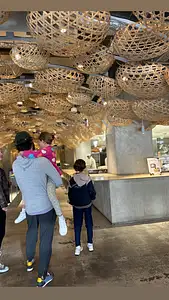
Thomas
Reviewed on:
Nov 29, 2025
Highly knowledgeable - as much about history as the food - pleasant, entertaining and helpful guide. A pleasure to meet him.
Ian
Reviewed on:
Nov 27, 2025
John was fantastic! He gave us a wonderful tour of the market. His knowledge and expertise was outstanding. He made sure our two teenage boys got all the food they wanted and pointed them to many different things to try. We had a wonderful morning and would definitely recommend to anyone from out of town.
Rachel
Reviewed on:
Nov 27, 2025
